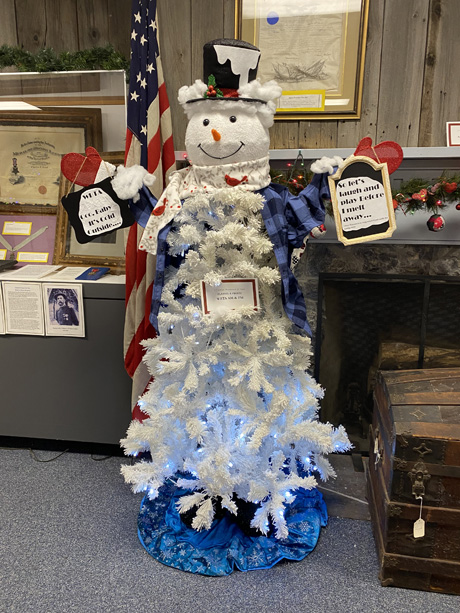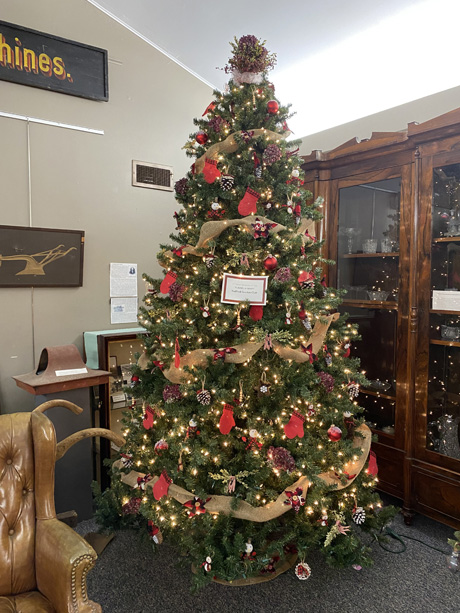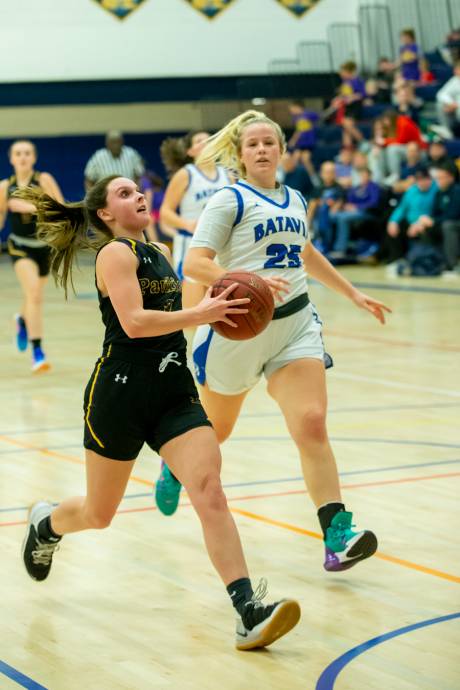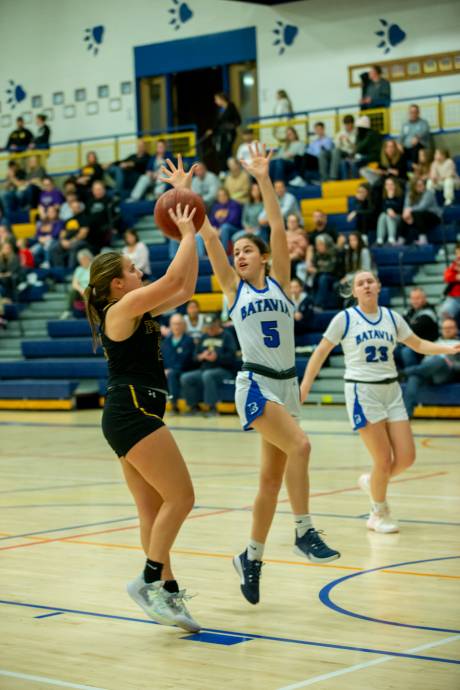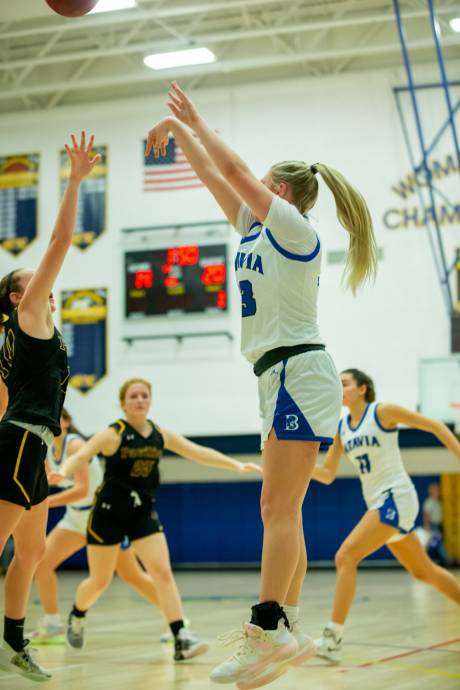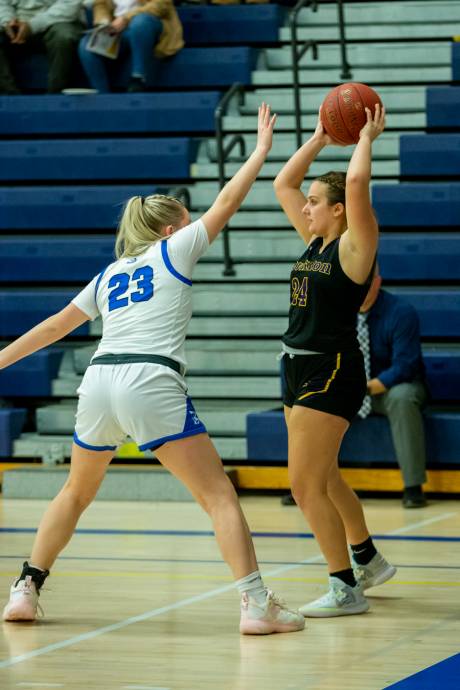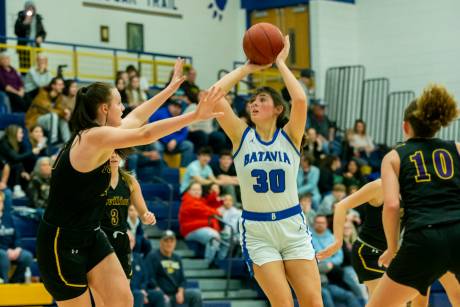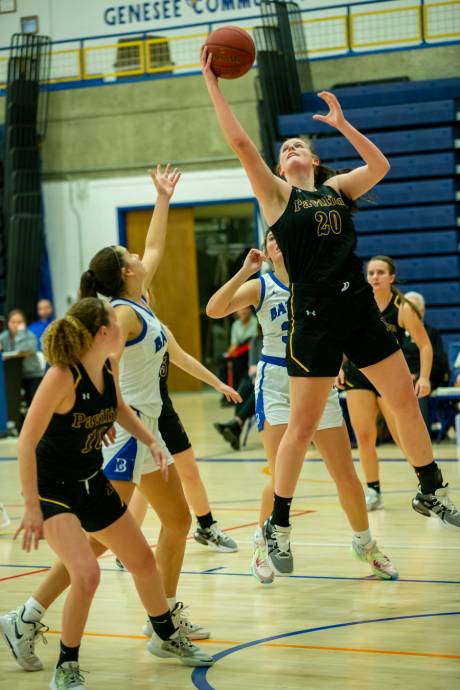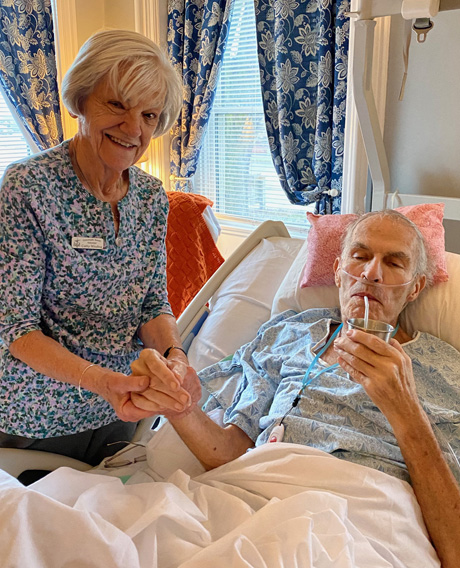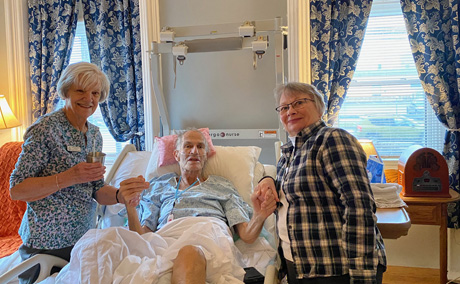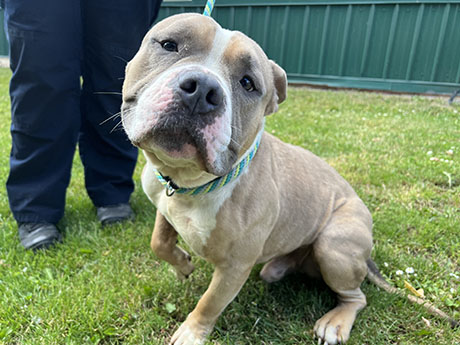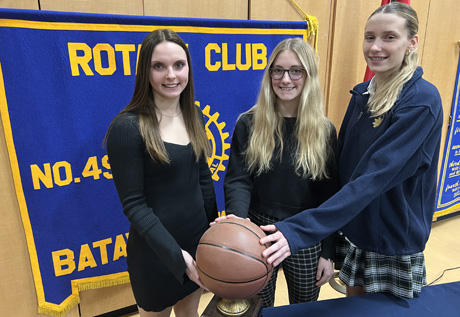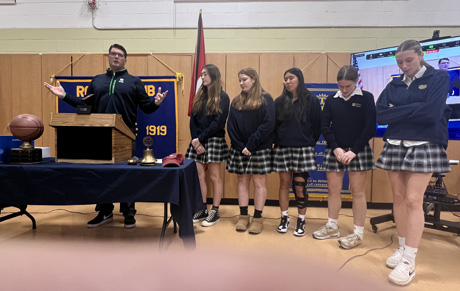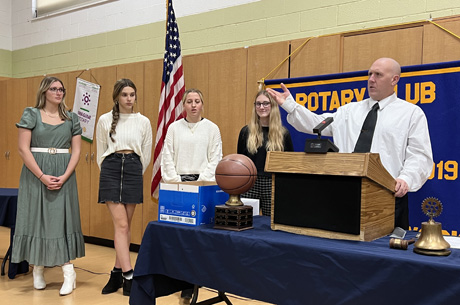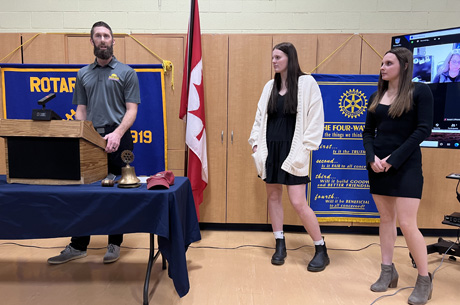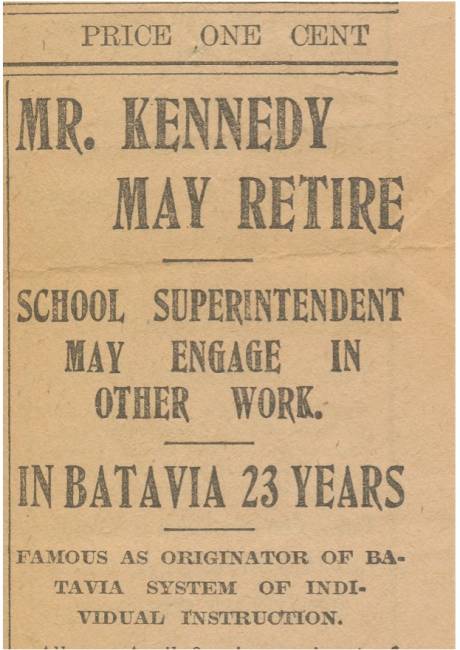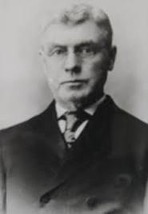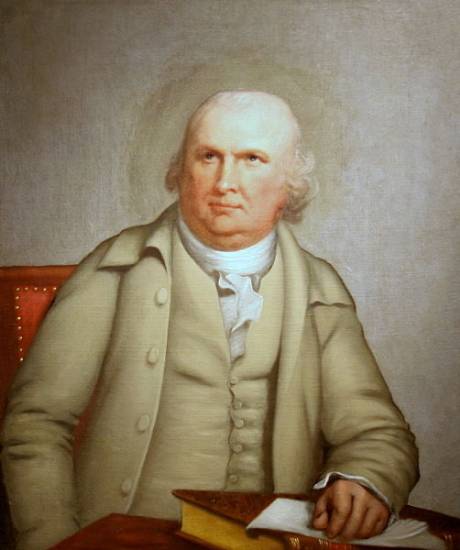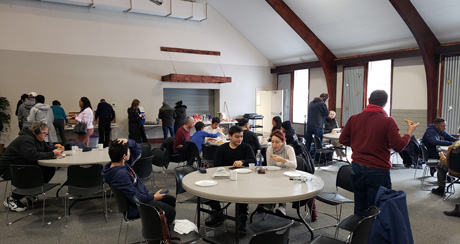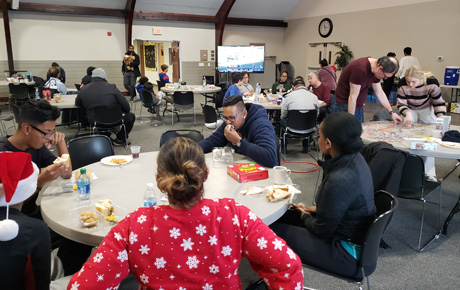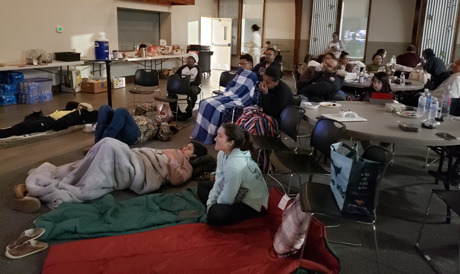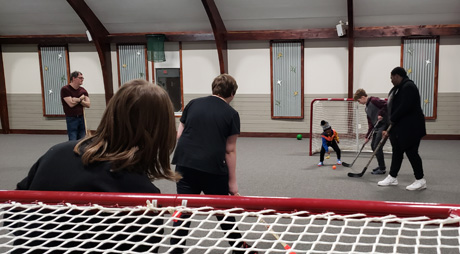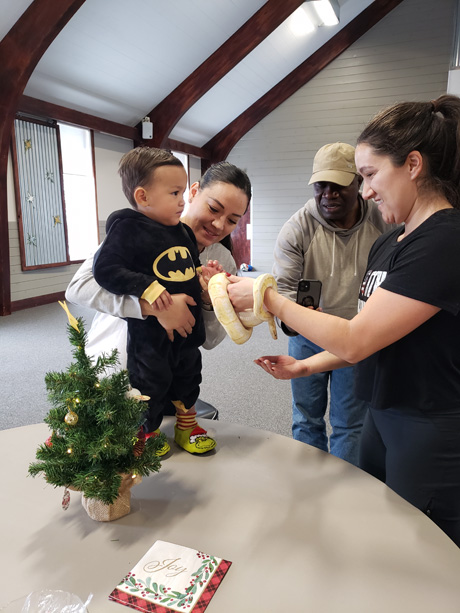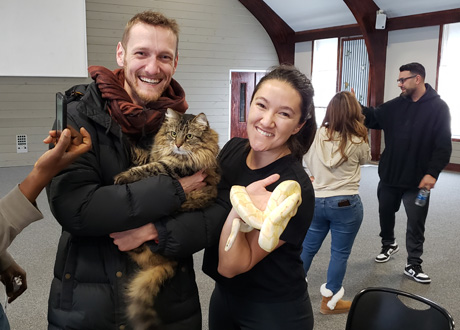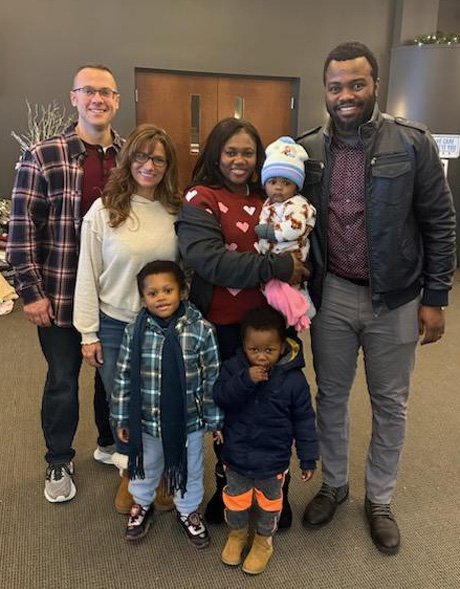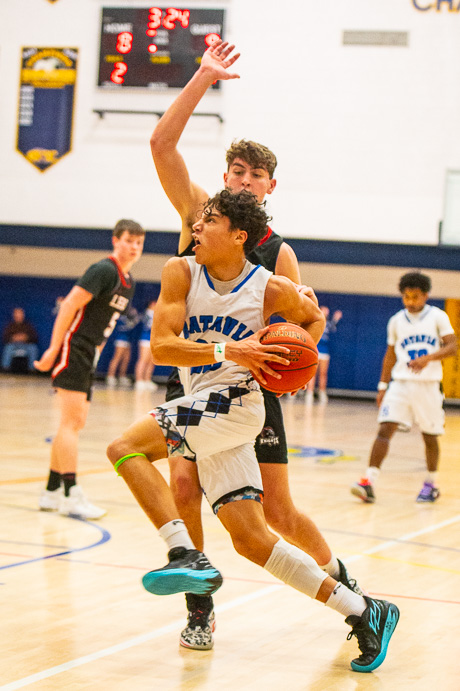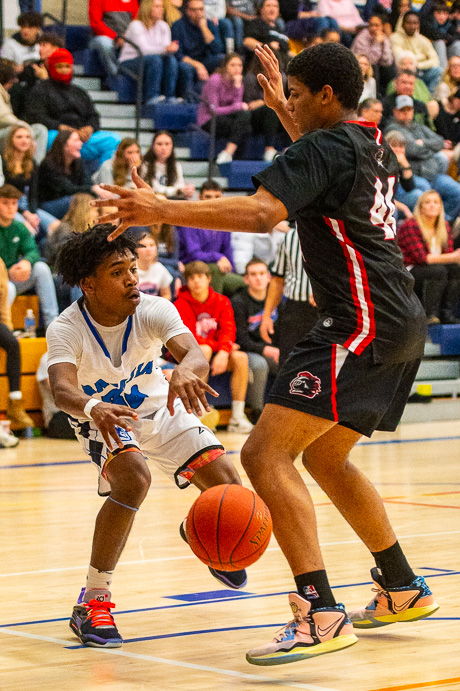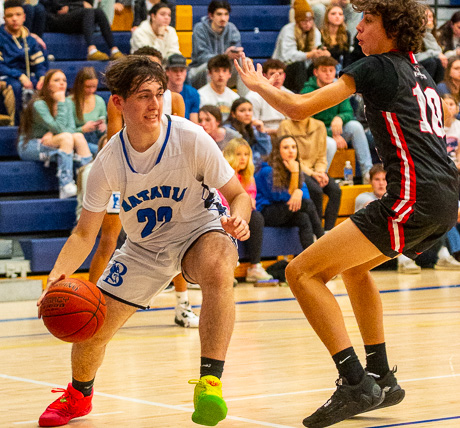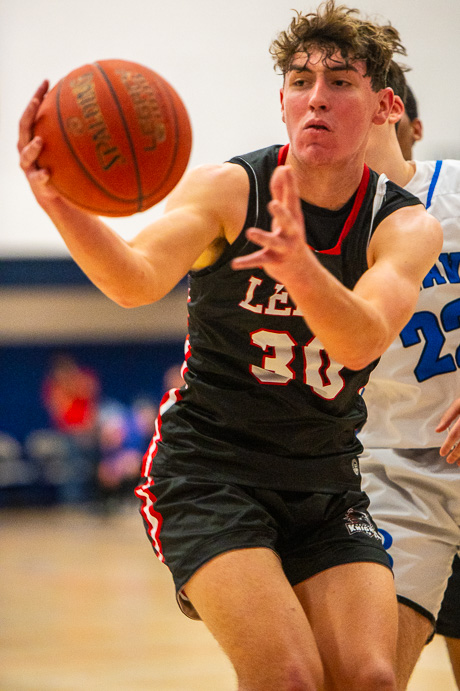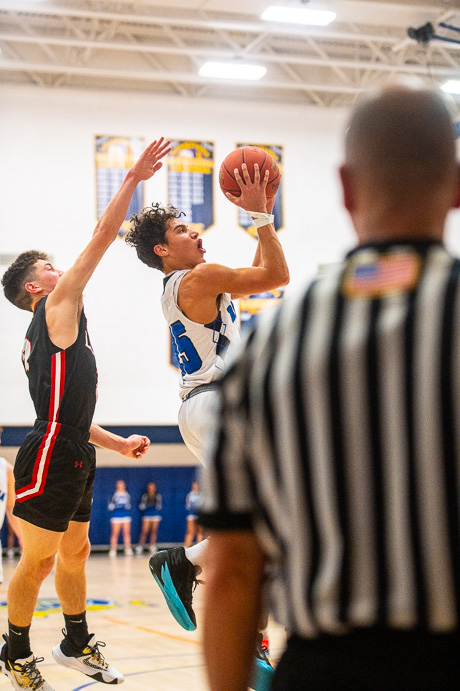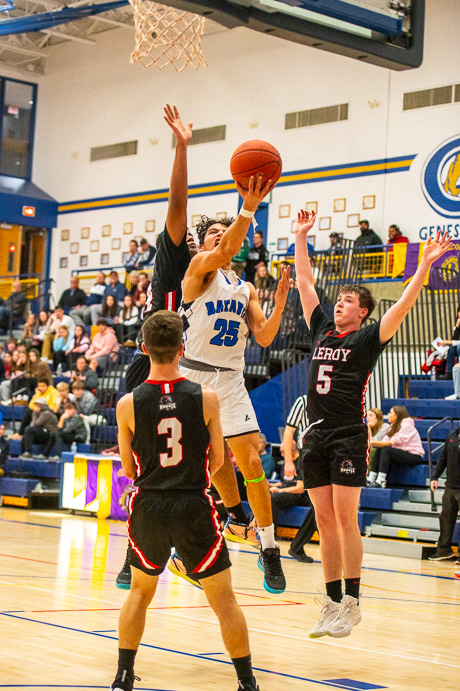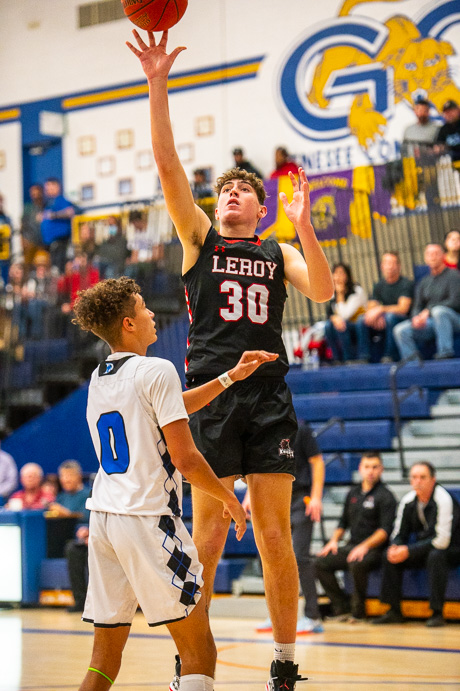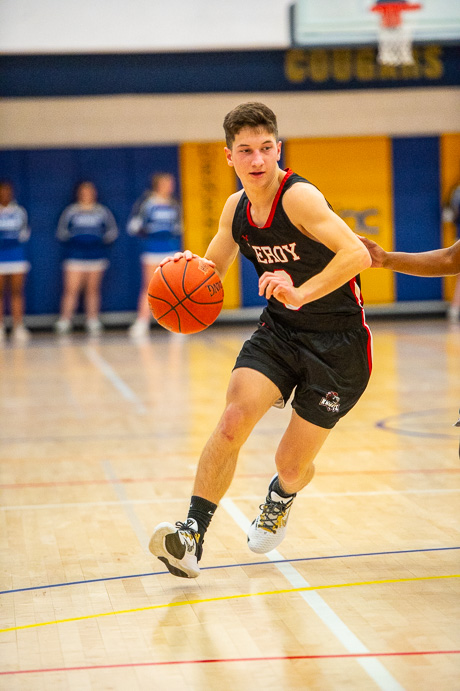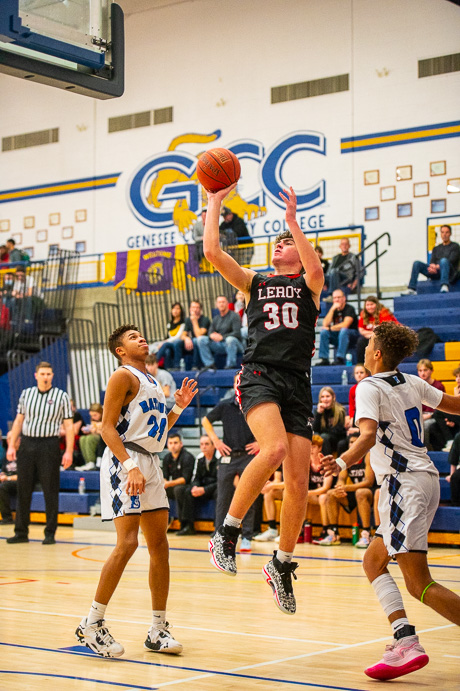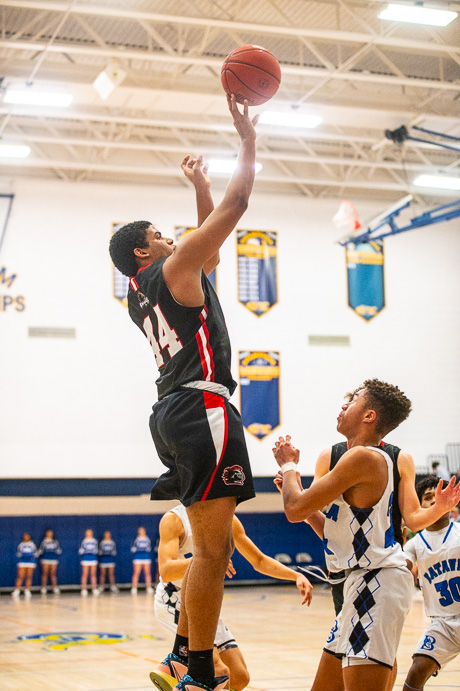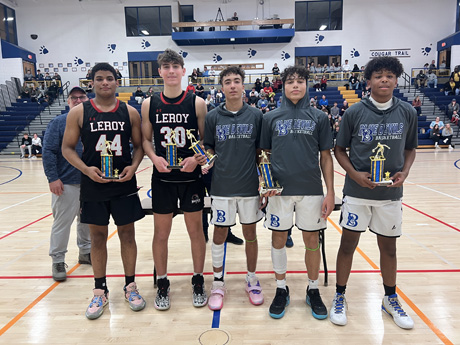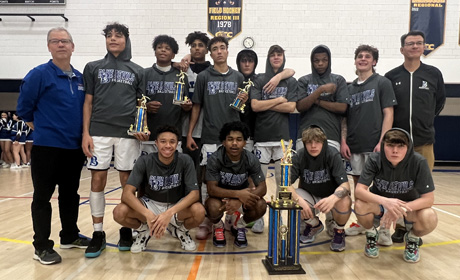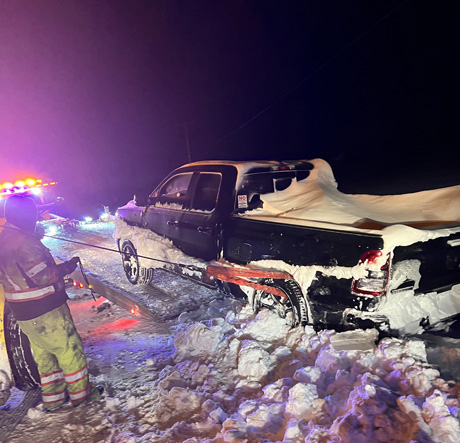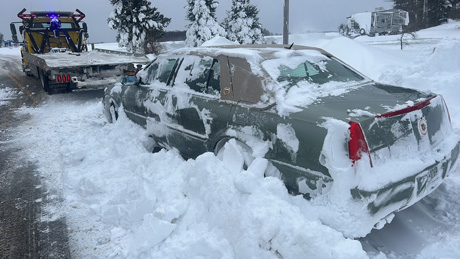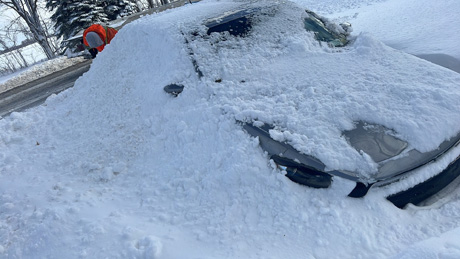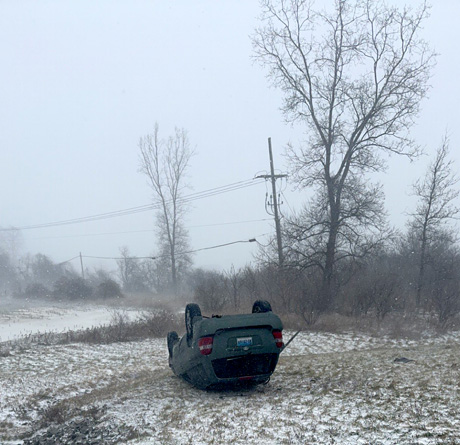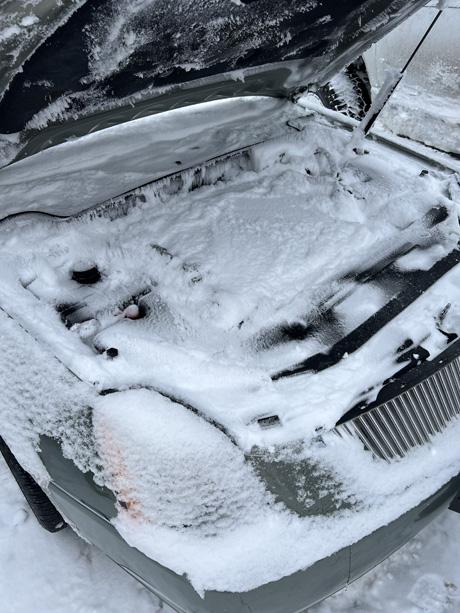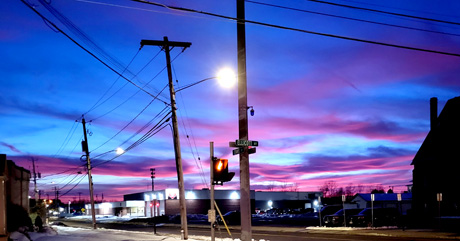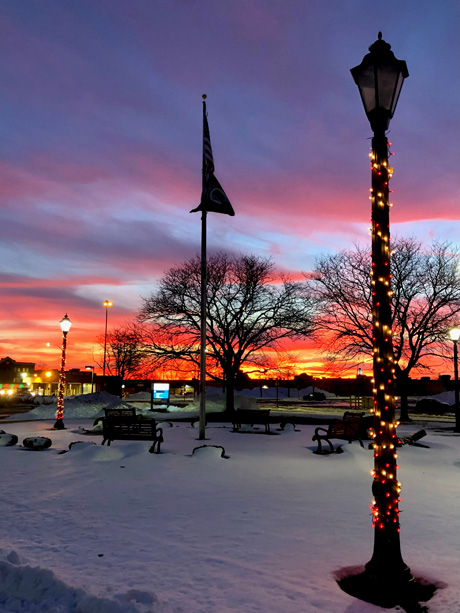Jose A. Rivera, 36, of Batavia, is charged with criminal contempt 1st, attempted promoting prison contraband 1st, and Ida M. Vanorden, 36, of Swan Street, Batavia, is charged with conspiracy 5th. Rivera and Vandorden are accused of conspiracy along with an unknown male, to introduce contraband into the Genesee County Jail. The contraband was intercepted by corrections officers on Dec. 26. Rivera is accused of violating a stay-away order of protection. Both Rivera and Vanorden were issued appearance tickets. The investigation is ongoing, and deputies are attempting to identify the third suspect. Any person who may have additional information are requested to contact Deputy Nicholas Charmoun at (585) 345-3000, ext. 3258
Ledeja K. Wright, 32, of Maple Street, Batavia, is charged with torture/injure animal/fail to provide sustenance. Wright is accused of leaving a dog in an apartment after moving out and failing to provide sustenance to the animal. The incident was reported Nov. 30. Wright was arrested Dec. 15. She was arraigned in City Court and released. The dog is at the Animal Shelter.
Vicki Lynne Manns, 52, of Brookville Road, Alexander, is charged with menacing 2nd, criminal possession of a weapon 4th, assault 3rd, and harassment 2nd. Manns is accused of throwing a tray at a person, causing an injury. She is also accused of pointing a firearm at the same person. She was issued an appearance ticket.Robert L. Drennen is charged with criminal mischief 3rd. Drennen is accused of causing damage to a residence in the City of Batavia on Dec. 23. He was released on an appearance ticket.
Julie R. Richardson, 31, of Batavia, is charged with grand larceny 4th, petit larceny, conspiracy 5th and tampering with evidence. Richardson is accused of stealing from a vehicle on South Main Street, Batavia, on Nov. 16. Richardson was arrested after an investigation by Officer Nicole McGinnis.
Andrew A. Crimes, 50, of West Main Street Road, Batavia, is charged with criminal contempt 1st and aggravated family offense. Crimes is accused of violating an order of protection by contacting the protected party on Dec. 9. He was arraigned in City Court and released.
Deanna L. Yox, 37, of Clifford Street, Buffalo, is charged with petit larceny. Yox is accused of stealing from a business in Batavia in February 2020. She was arrested Dec. 21 following an investigation by officers Felicia Martinez and Wesley Rissinger. Yox was released on an appearance ticket.
Malinda J. Falk, 41, of East Main Street, Batavia, is charged with harassment 2nd and criminal obstruction of breathing/blood circulation. Falk is accused of attacking another individual on Dec. 17 at a location on East Main Street, Batavia. Falk was arraigned in City Court and released on her own recognizance.
David L. Weaver, 32, of Atlanta, Illinois, is charged with harassment 2nd. Weaver is accused of striking another person during a disturbance on Dec. 10. He was released on an appearance ticket.
Dustin T. Forkell, 31, of Holley, is charged with petit larceny and false impersonation. Forkell is accused of stealing property from a local business on Dec. 11 and fleeing. He was located at another business in the Town of Batavia, at which time he allegedly provided a false name to officers. He was arrested, processed at Batavia PD, and issued an appearance ticket. The incident was investigated by officers Wesly Rissinger and Megan Crossett
An 18-year-old of Washington Avenue, Batavia, is charged with assault 3rd and criminal mischief. An 18-year-old resident is accused of attacking another person on Dec. 14 with an iPad, causing an injury. The youth was arraigned in City Court and released.
Brittanee J. Hooten, of State Street, in Batavia, was arrested on two bench warrants after having failed to appear on an appearance ticket on prior arrests. Hooten was arraigned on Dec. 14 in City Court and released.
Karrie A. Morrow, 40, of Summit Street, Batavia, was arrested on several outstanding Bench Warrants. Morrow was arrested on Dec. 14 after she was located during an unrelated incident. The warrants stem from several petit larceny cases at local businesses. Morrow was arraigned in City Court and released under supervision.
Jeffrey M. VanEpps, 45, of Albion, is charged with criminal mischief and attempted assault 3rd. VanEpps was allegedly involved in a disturbance at a business on West Main Street on Dec. 14. He was arraigned in City Court and released.
Jacob A. Richards, 34, of Rochester, is charged with possession of a forged instrument 1st and grand larceny 4th. Richards allegedly passed a forged check at a local bank. He was arraigned in City Court and ordered held on bail.
Terrance L. Falk, 24, of North Street, Batavia, is charged with criminal mischief 4th and assault 3rd. Falk was allegedly involved in a disturbance on an unspecified date in the City of Batavia. After initially fleeing the scene, according to police, he was located and taken into custody without incident. He was arraigned in City Court and released on his own recognizance.
Byron K. Bell, 53, of Rochester, is charged with criminal possession of stolen property 3rd, aggravated unlicensed operation 3rd and speeding. Bell was stopped on Dec. 11 in the City of Batavia by Officer Josh Girvin and Officer Bryan Moscicki. Bell was allegedly driving a stolen vehicle while on a suspended license. He was arraigned in City Court and jailed.
Harry R. Silliman, 58, of Batavia, is charged with trespass. Silliman was allegedly on property on Maple Street without permission. He was arrested and issued an appearance ticket.
Zakara R. Jackson, age 19, of Trumbull Parkway, Batavia, is charged with bail jumping 2nd and failure to appear. Jackson was arrested on a warrant on Dec. 8 He was arraigned in City Court and released under supervision.
Daquan J. Butler, 26, of Ross Street, Batavia, is charged with petit larceny. Butler is accused of stealing an iPhone 13 from another person on Ross Street on Dec. 3. He was arraigned in City Court and released.
Raymond Lunday Kelley, of Oak Street, Batavia, is charged with a false written statement. Kelley allegedly provided law enforcement with a false written statement related to an incident reported at Batavia Downs at 11:59 p.m., Dec. 16. He was released on an appearance ticket.
Douglas Wayne Logsdon, 74, of Big Tree Road, Pavilion, is charged with endangering the welfare of a child and harassment 2nd. Logsdon allegedly threw items at a person while a child was present during an incident reported at 5:41 p.m., Dec. 16 at a location on Big Tree Road, Pavilion. Logsdon was arraigned in Town of Pavilion Court and released.
Rachel B. Solomon, 30, of North Lake Road, Pembroke, is charged with criminal contempt 2nd and harassment 2nd. Solomon is accused of violating an order of protection by harassing an individual at 1 p.m. on Dec. 22. She was arraigned in Town of Pembroke Court and ordered held without bail. Solomon is also charged with aggravated criminal contempt, assault 3rd, and endangering the welfare of a child. The charges stem from an incident reported at 2:45 a.m., Jan. 2, at a location on Meadville Road, Tonawanda Indian Reservation. Solomon was jailed pending arraignment.
Joseph Michael Morelli, 54, of Orchard Street, Oakfield, is charged with DWI and driving with a BAC of .08 or greater. Morelli was allegedly found to be intoxicated at 2:02 p.m., Dec. 14, while at the Genesee County Probation Department on Main Street, Batavia, and arrested by Deputy Jonathan Dimming. Morelli was released to a third party on an appearance ticket.
Adam Joseph Pape, 35, of Morrow Road, Pavilion, is charged with felony DWI, felony driving with a BAC of .08 or greater, aggravated unlicensed operation, driving without an interlock device, and drinking alcohol in a motor vehicle on a public highway. Pape was stopped at 8:11 p.m., Dec. 30, by Deputy Zachary Hoy and released on an appearance ticket.
Nia Hanevin Spring, 23, of Griffin Road, Tonawanda Indian Reservation, is charged with criminal contempt 2nd and grand larceny 4th. Spring was arrested on Dec. 30, processed at the Genesee County Jail, arraigned in Town of Alabama Court, and released under supervision.
Ronald Charles Inzinna, 54, of Le Roy, is charged with criminal mischief and harassment 2nd. Inzinna is accused of subjecting another person to unwanted physical contact and preventing that person from contacting 9-1-1 during an incident reported at 6 p.m., Dec. 30, at a location on East Main Road, Le Roy. Inzinna was arraigned in Town of Stafford Court and released on his own recognizance.
Arthur James Felski, 45, of Tonawanda Indian Reservation, is charged with harassment 2nd. Felski was charged following an investigation into an incident reported at 3:25 p.m., Jan. 1, in Basom. He was arraigned in the Genesee County Centralized Arraignment Court and released on his own recognizance.
